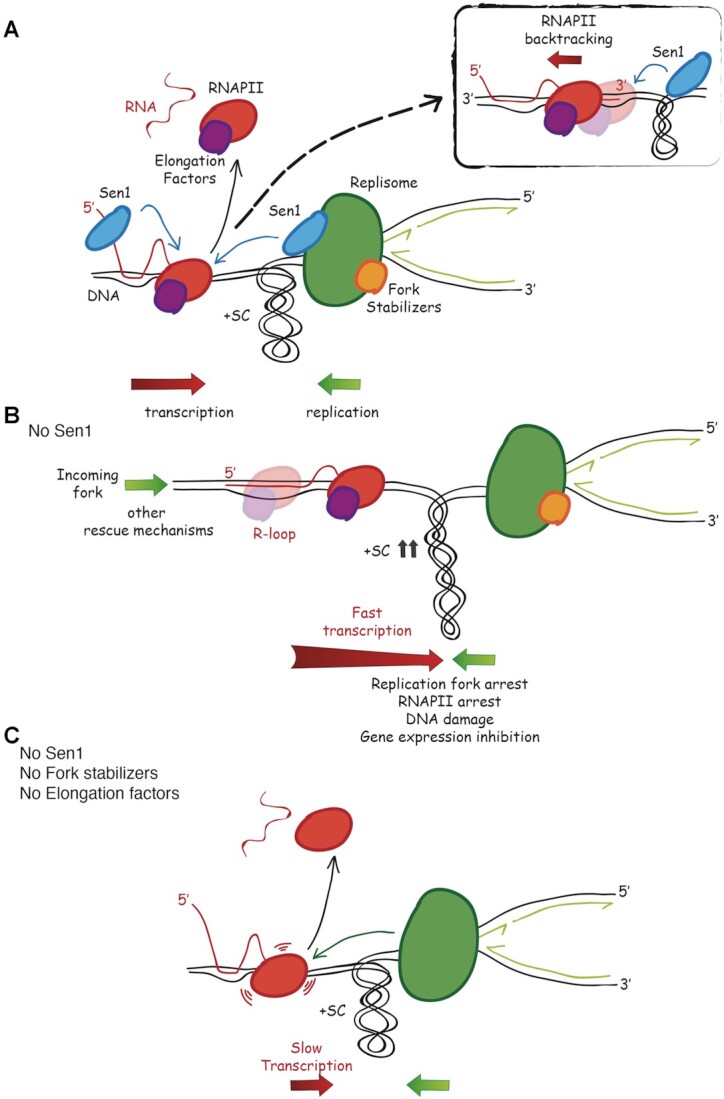Figure 7.

Model for the interplay between Sen1 and RNAPII elongation in head-on replication-transcription conflicts. (A) Sen1, while translocates in 5′ to 3′ direction along nascent RNA or DNA at the fork, removes elongating RNAPII together with RNA:DNA hybrids, facilitating replisome progression past transcription. Upon building up of positive supercoils at the site of head-on replication-transcription collision, paused RNAPII may undergo backtracking, generating an R-loop that involves the exposed 3′ end of nascent RNA (Box). Such anterior R-loop may be also targeted by Sen1. (B) In the absence of Sen1, elongating RNAPII, upon clashing with the replication fork, engages in a stable R-loop. Both RNAPII and replication forks are arrested during the collision, leading to DNA damage and, in the long run, to transcription inhibition. Mechanisms alternative to Sen1 can eventually rescue the replication block. (C) Attenuation of elongation processivity prevents R-loop-mediated anchoring of RNAPII to DNA template, allowing the replisome to displace it, even in the absence of Sen1 and fork stabilizer factors.
